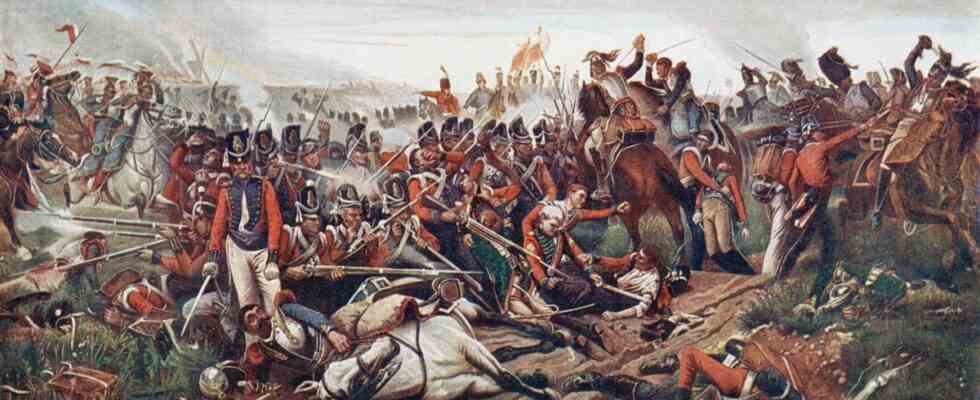Apparently they didn’t turn into fertilizer after all, at least not on a large scale. For years there has been a suspicion that the bones of those who died at the Battle of Waterloo in 1815 were secretly dug up and shipped to England. There they are said to have been ground up and finally ended up on the fields as fertilizer. Just a few weeks ago, the Scottish archaeologist Tony Pollard announced that he finally wanted to systematically check this assumption. Now he is presenting new findings with the historians Bernard Wilkin and Robin Schäfer, and they suggest that the bones probably had a different fate. However, this was not pious either.
Among other things, the scientists evaluated previously unpublished community files and contemporary reports. In a study available to SZ that has not yet been published or reviewed by peers, they now argue that it was the sugar industry that secured the bones of the dead. In order to produce white sugar, the juice of the sugar beet has to be filtered. First, this was done with charcoal. In 1811, however, the French industrialist Louis-Charles Derosne found a better filter material, namely animal charcoal made from their bones. Sugar was a coveted commodity and the industry was booming. Soon she needed tons of bones. With demand, prices rose. And the temptation to use soldiers’ mass graves, possibly too.
It is still a mystery where the dead of Waterloo went. On June 18, 1815, around 20,000 people and probably more horses were stabbed, shot or torn by cannons south of Brussels. Their bodies were partly burned, partly buried. So far, however, archaeologists have only been able to find two complete skeletons during excavations, as well as waste from a field hospital with individual bones from amputated limbs. No wonder, say Pollard, Wilkin and Schäfer. Because the local farmers had long since turned the bones into money in their fields, in quiet agreement or at least tolerated by the local authorities.
The authors write of a veritable rush to the bones of the fallen
It was an enormous amount of money. Even if only 10,000 people and just as many horses were buried in Waterloo, that would correspond to around 1,700 tons of bones with a value of at least 238,000 francs at the time, a small fortune, the scientists write. The region was poor, who can blame the people? The fallen soldiers were not their relatives.
Similar to the gold rush on the Klondike, for example, Pollard, Wilkin and Schäfer write of a real “bone rush”. In the beginning, bones were actually in demand in England for the production of fertilizer. Later, the authorities would have made exports increasingly difficult, but by the 1830s there were already new local customers anyway. The heyday of the sugar industry began. In Waterloo, farmers now increasingly grew sugar beets instead of grain. A sugar factory, the “Raffinerie Nationale de sucre indigène et exotique”, was built less than five kilometers from the battlefield. Soon there was a second. Bone mills opened in the area. And it is only now, the three researchers write, that there are first reports from the region of scavenging. In 1840, for example, a German geologist visited the battlefield and found open mass graves in which people were digging for Brussels merchants. One of the workers is said to have praised the bones of the Guard Grenadiers: they were particularly valuable because they weighed as much as horse bones.
Waterloo may have been just the tip of the iceberg
It is curious that the man should have spoken so openly, because what he did was illegal, at least officially. The mayor of the nearby village of Braine-l’Alleud posted a notice in 1835 stating that anyone who disturbed the peace of the fallen would be punished with three months to a year in prison and a fine of ten to 200 francs. There must have been a reason for this posting. The warning was specifically aimed at landowners and farmers. However, it seems questionable whether the people were actually persecuted.
It might have been the same elsewhere. According to the three historians, Waterloo is just the tip of the iceberg. Many other battlefields are also worth a look. In Hamburg, they found reports from 1821 that hundreds of bone collectors were openly digging up the bones of French soldiers outside the city. And also, for example, on the field of the Battle of the Nations near Leipzig in 1813, they write, so far hardly any dead have been found.

